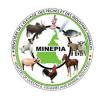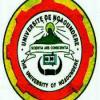Social stigma as an epidemiological determinant for leprosy elimination in Cameroon.
| Title | Social stigma as an epidemiological determinant for leprosy elimination in Cameroon. |
| Publication Type | Journal Article |
| Year of Publication | 2011 |
| Authors | Nsagha DS, Bissek A-CZK, Nsagha SM, Njunda AL, Assob JCN, Tabah EN, Bamgboye EA, Oyediran ABankole O, Nde PF, Njamnshi AK |
| Journal | J Public Health Afr |
| Volume | 2 |
| Issue | 1 |
| Pagination | e10 |
| Date Published | 2011 Mar 01 |
| ISSN | 2038-9922 |
| Abstract | Leprosy has been eliminated as a public health problem in most countries of the world according to the WHO, but the social stigma to the disease is still very high. The present study was performed to investigate the role of social stigma as a determinant for leprosy elimination in a leprosy endemic region of Cameroon. Focus group discussions, in-depth interviews and structured questionnaires were used to investigate leprosy social stigma among lepers, their contacts and a control group consisting of patients attending a health facility for reasons other than leprosy. Informed consent was sought and gained prior to starting the study. Focus group discussions and in-depth interviews identified three types of stigma: lack of self-esteem, tribal stigma and complete rejection by society. From the 480 structured questionnaires administered, there were overall positive attitudes to lepers among the study population and within the divisions (P=0.0). The proportion of participants that felt sympathetic with deformed lepers was 78.1% [95% confidence interval (CI): 74.4-81.8%] from a total of 480. Three hundred and ninety nine (83.1%) respondents indicated that they could share a meal or drink at the same table with a deformed leper (95% CI: 79.7-86.5%). Four hundred and three (83.9%) participants indicated that they could have a handshake and embrace a deformed leper (95% CI: 80.7-87.3%). A total of 85.2% (95.0% CI: 81.9-88.4%) participants affirmed that they could move with a deformed leper to the market or church. A high proportion of 71.5% (95.0% CI: 67.5%-75.5%) participants stated that they could offer a job to a deformed leper. The results indicate that Menchum division had the lowest mean score of 3.3 on positive attitudes to leprosy compared with Mezam (4.1) and Boyo (4.8) divisions. The high proportion of positive attitudes among the participants and in different divisions is a positive indicator that the elimination of leprosy social stigma is progressing in the right direction. Quantification of stigma to assess the elimination struggle is a new research area in public health. |
| DOI | 10.4081/jphia.2011.e10 |
| Alternate Journal | J Public Health Afr |
| PubMed ID | 28299051 |
| PubMed Central ID | PMC5345469 |











